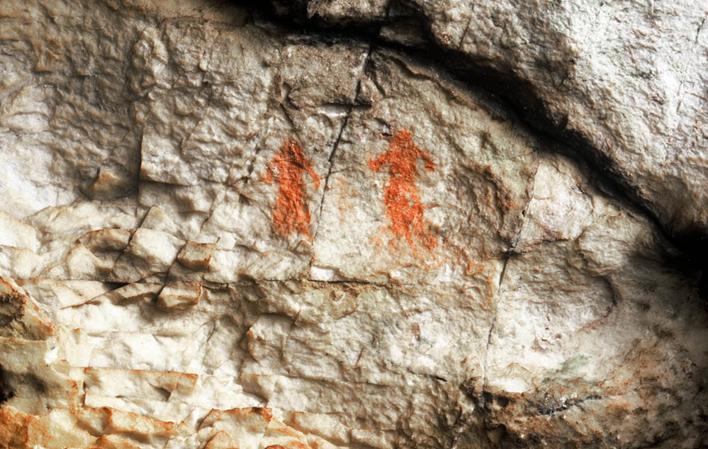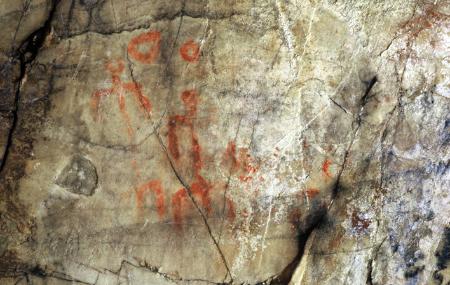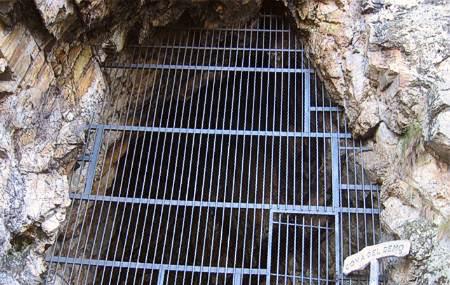
- Title Boal Western Asturias
- Address Address: ■ 33731 - Froseira
In the municipality of Boal, parish of Doiras, place of Froseira, the river Ourubio waters the slopes of Llanteiro mountain, where at 450 metres above sea level is the Cova del Demo, used for a long time as a shelter for livestock and refuge during the civil war. This area has always been shrouded in a halo of mystery, of evil presences, very conducive to the celebration of covens, etc. There are frequent toponyms that refer to the devil, such as Cedemonio, etc.
Pedro Pablo Pérez Rodríguez and Miguel Ángel de Blas Cortina with Elías Carrocera, both professors at the University of Oviedo, carried out the first studies of this quartzite cave, some 15 metres deep and 8 metres high, in which there are paintings of zoomorphs and anthropomorphs of a schematic nature, which due to their typology could be related to the naturalistic schematic trend that emerged in the Spanish east. The paintings date from the second half of the Bronze Age between 1500 and 1100 BC.
It has been declared an Asset of Cultural Interest of the Historical Heritage of the Principality of Asturias (maximum protection), according to Law 16/85 of 25 June 1985 on Spanish Historical Heritage.
The cave can be reached on foot from Froseira, via a steep slope of about 2000 metres, which is well signposted. It is closed to the public with a gate and a special permit is required to visit the interior of the cave from the Regional Ministry of Culture of the Principality of Asturias.
The Cova del Demo is the only archaeological site in a cave in western Asturias, which makes it more difficult to study comparatively as there are no nearby references. Most of the paintings are on the left wall and appear in isolated groups, divided into blocks, taking advantage of the smooth surfaces of the rock. They are red in colour, in various shades, probably due to the passage of time and the deterioration caused by the abundance of water running down the walls continuously, without forgetting the original quality of the paintings. The technique used is flat ink, i.e. painting directly on the stone.
The right wall is more abrupt and less conducive to painting, which is why the existing paintings are scarce and take advantage of the few smooth planes that exist.
The access route to the Cova del Demo is signposted, although it is advisable to wear appropriate footwear.
NOT VISITABLE
Antique Bronze



